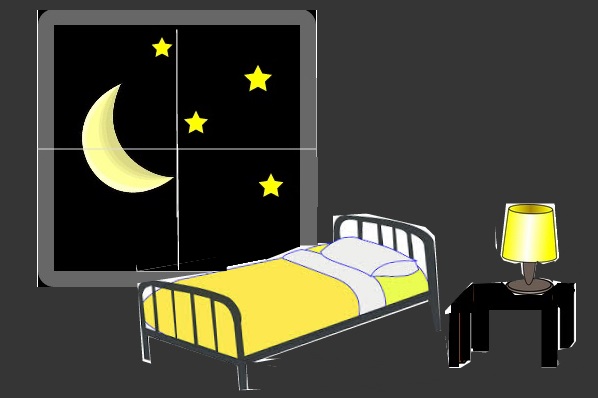Sleeping in the Dark

As busy middle-schoolers, with a lot of work on our hands, we usually don’t get as much sleep as we should. With homework and extracurriculars gobbling up our time, we’re often concerned about our sleeping habits. Usually this means how much sleep we get at night, although according to George Dvorsky, the amount of light around us when we sleep also has significant effects on our health.
If we look back into the past, before the end of the Stone Age, we can see that humans were only exposed to a few sources of light: the sun during the day, and the moon and stars– and sometimes light from campfires– during the night. The day/night light cycle was regular, and our bodies became accustomed to that steady pattern. However, in modern times we have electricity, among many other technologies, and can use light even during the darkness of nighttime.
Artificial lighting at night, or LAN for short, suppresses the amount of melatonin our bodies produce. Melatonin is a biochemical produced at night by the pineal gland in the brain. It controls our sleeping cycle as well as lowers blood pressure, glucose levels, and body temperatures. In short, melatonin and what it does ensures that we get restful sleep at night. A group of cells in the brain called the Suprachiasmatic Nucleus (SCN) regulates the body clock. It receives signals from the optic nerves in our eyes when they sense light. This tells our brains to wake up. It also begins to raise our body temperatures and produce hormones like cortisol. Low cortisol levels at night allow us to sleep, and higher cortisol levels during the day allow our energy levels to stabilize and our immune functions to modulate.
Unfortunately, LAN ratchets up cortisol levels at night. Not only does that disturb sleep and pile up sleep debt, it can also cause many health problems, including body-fat levels, insulin resistance, and systemic inflammation. Darkness in our bedrooms at night makes sure that no optic signals are sent to the SCN, meaning that our bodies start producing the melatonin we need.
One particular effect that LAN has on our health is our body weight. Believe it or not, LAN actually increases the amount of weight we gain by altering the time we consume food. Low melatonin levels, which, as mentioned earlier, can be caused by LAN, also seem to have a correlation with diabetes.
Another, more serious effect of the disruption of hormones and biochemicals caused by LAN is cancer. Although the reasons for this connection are unknown, there is evidence of a surprising pattern. In a 10-year study, researchers found that, out of a sample group of over 1,670 women, 22% of women who had a higher intensity of light in their sleeping area had higher chances of developing breast cancer than the women who slept in a completely dark environment. The cause, the researchers said, was hormone disruption as a result of melatonin suppression. Other studies have shown that nurses who work night shifts have higher risks of getting breast cancer than nurses who work during the day.
LAN doesn’t even have to be bright light to cause problems. A study conducted on hamsters showed that chronic exposure to dim light during the night caused symptoms of depression in the rodents. Blue light at night seems to be particularly powerful in prompting depression-like symptoms. Also, LAN negatively impacts the immune system and affects mood and learning.
So now we know, sleeping in the dark at night is important, and it does have significant effects on our health. Sleep tight, and don’t let the night lights shine!



















